The residents of Óbuda had wanted a bridge from the end of the 19th century, to give them better access to jobs in the factories of Újpest. In 1891 they sent a delegation to the Prime Minister to raise the issue. However, the government and national assembly did not see the need for a bridge at the time. Nevertheless, at the beginning of the 20th century, the request was answered. Act XLVIII of 1908 ordered the construction of a bridge between Óbuda and Újpest, but the construction could not quite begin.
Work began on the post-rebuilding of the Chain Bridge, but World War I intervened. After that, the goals of urban development changed slightly, and instead of the Óbuda bridge, a bridge was built at Boráros Square in the south.
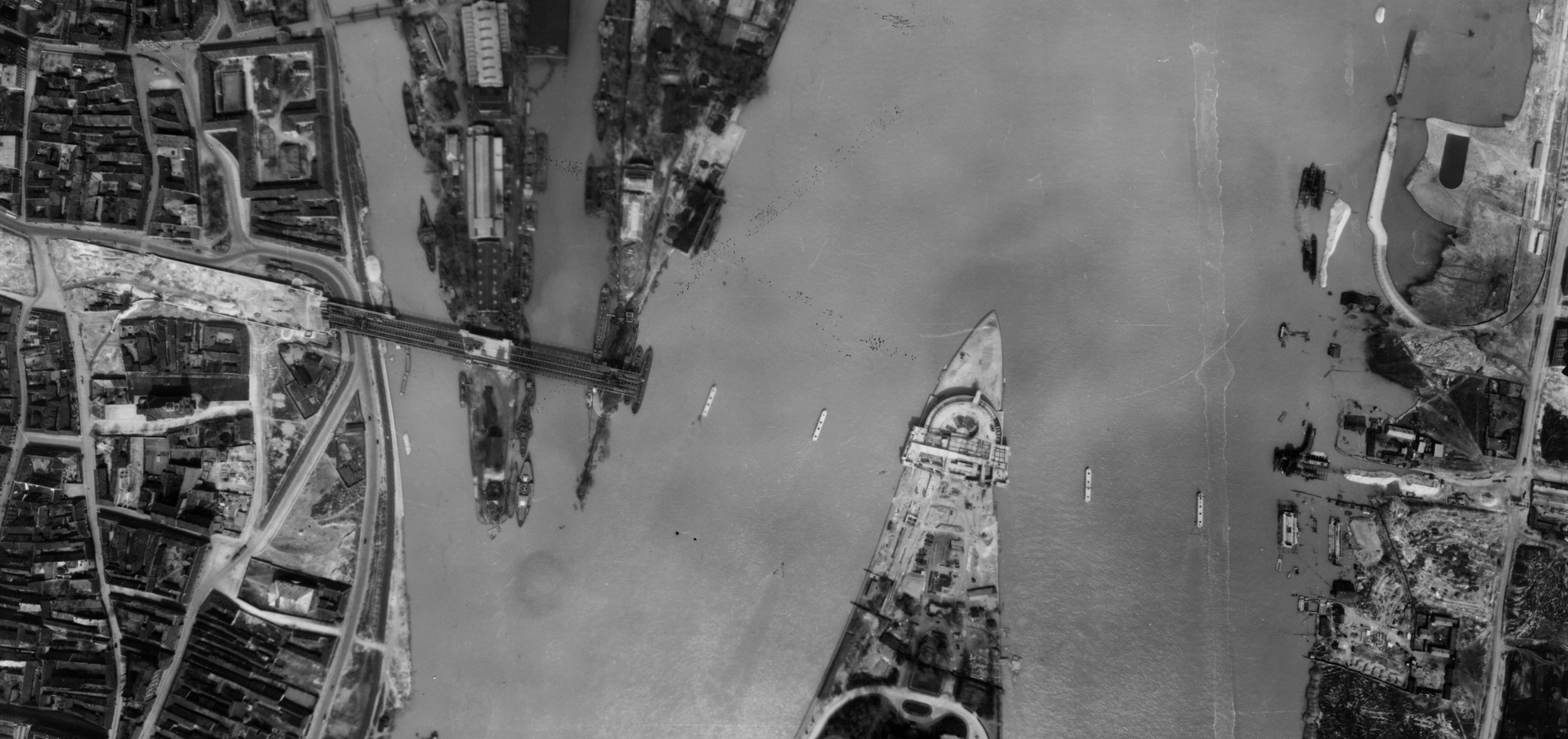
The half-built bridge in 1944. The pillars complete, and visibly stand in different directions in the two branches of the river (Photo: Fortepan, Royal Hungarian Air Force)
Plans for the northern crossing were completed in the 1930s. The first tender was issued in 1932. The design was complicated by the fact that the two islands in the area separated the Danube into four branches. Thus, engineers were forced to chose between crossing each branch perpendicularly, or ignoring the direction of the water flow and building a straight bridge. Eventually, the later plan was chosen.
Several designs were submitted, and the first prize was shared between two design teams. However, the Ministry accepted neither and completed the final plans internally.
The original plans by the two design teams, both made up of professors, János Kossalka with Gyula Walder, and Győző Mihailich with Iván Kotsis, proposed arch bridges, while the bridge department planned a girder bridge.
Proposal for the line of the bridge from the Budapest Public Works Committee. The northern edge of Margaret Island does not stretch to the bridge (Source: FSZEK Budapest Collection)
Work began in 1939, the pillars were completed, as was a section of the bridge on the Óbuda side. Margaret Island was also extended, as it originally did not each as far as the bridge.
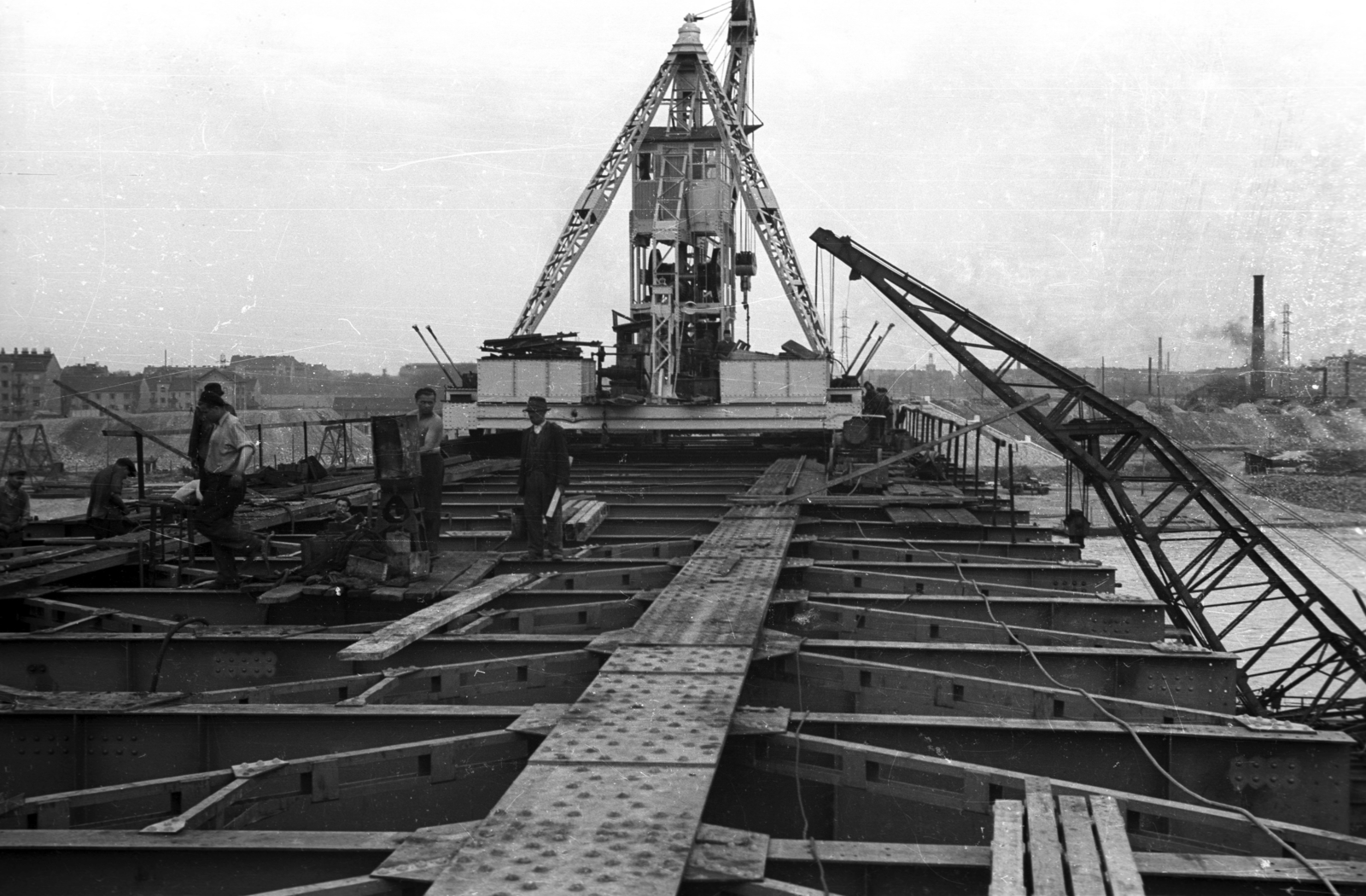
Construction in 1949 (Photo: Fortepan, Uvaterv)
It was even given a name and christened Árpád Bridge after Grand Prince Árpád the leader of the Magyar Tribes that conquered the Carpathian Basin. Construction was abandoned in the destruction of the war, but what had been built survived, and stood half-finished once hostilities ended.
Once the reconstruction of Szabadság Bridge and Margit Bridge had been completed, the authorities decided it was time to complete Árpád Bridge. However, the bridge had been planned with four main girders, but in 1948 construction only continue with two of these. Thus, at one point the structure narrowed to 13 metres from its full 27,6-metre width. Only the tram tracks and a single lane in each direction fit on the narrow bridge.
Construction was almost rushed and finished in under two years. The grand opening was scheduled for the most important holiday of the time, 7 November, the anniversary of the Great October Socialist Revolution.
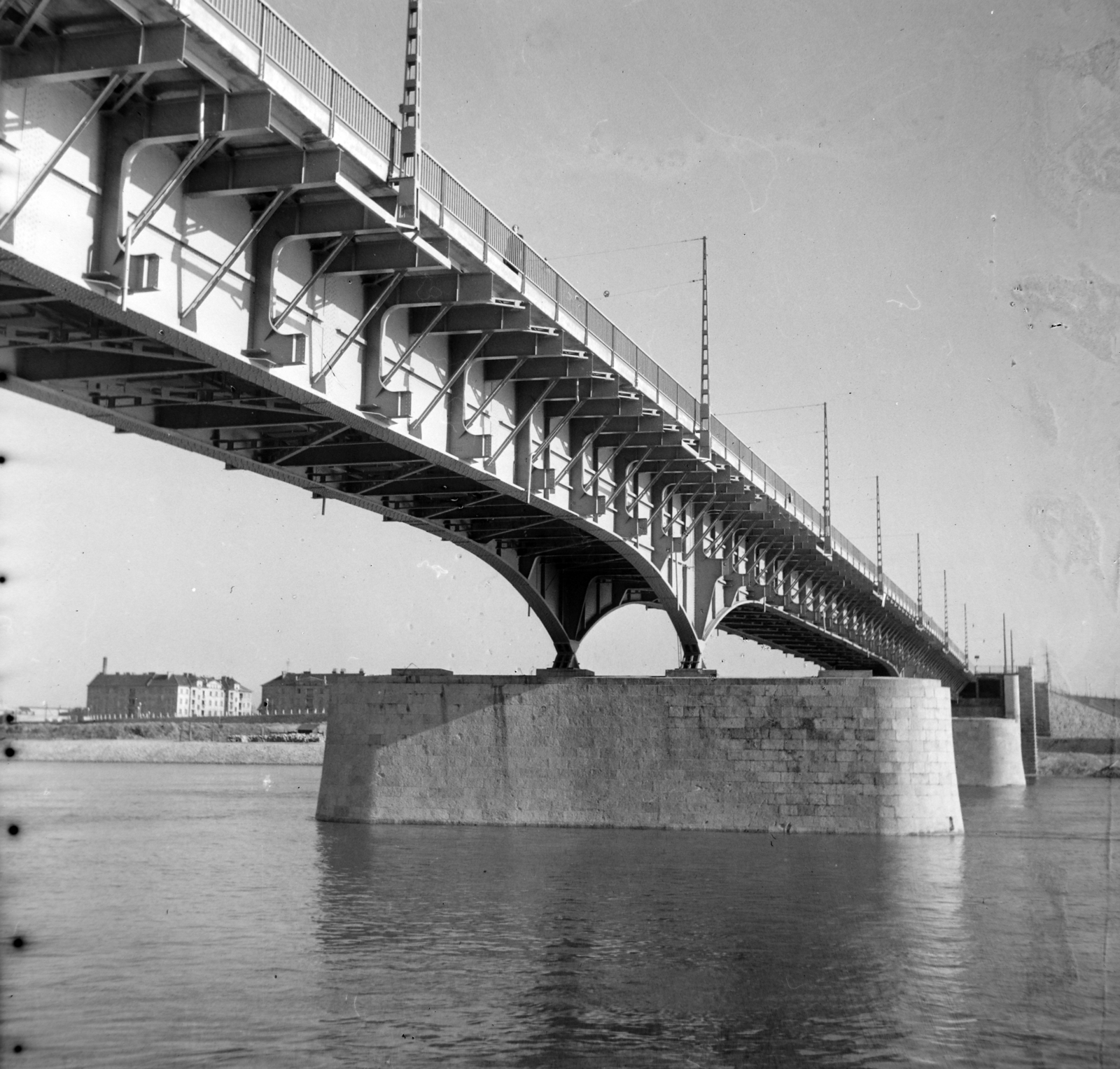
The roadway was supported by braces that protruded from the main girders (Photo: Fortepan, UVATERV)
Of course, the original name was no longer fitting. At "the request of the workers" the bridge was named after the totalitarian dictator of Josepf Stalin, to expand his already immense personal cult further. The structure was named Stalin Bridge on 4 April 1950.
The electric atmosphere is evident in the speech given by Minister for Transport Lajos Bebrics, quoted in the 9 November 1950 issue of Szabad Nép:
"A new bridge spans the two banks of the Danube in Budapest: the Stalin Bridge. The work bears the name of the great Stalin, whose wise commands are followed by the majority of progressive humanity with respect and admiring love as they fight for an ever better and richer life."
Tram traffic also used the bridge. Line 33 was given its number because the bridge had been opened on the 33rd anniversary of the Bolshevik coup. Moreover, even trains used the tracks before the construction of the Újpest Rail Bridge.
The name Stalin Bridge never stuck in public use, and the bridge was given its original name back in 1956. It has been known as Árpád Bridge ever since.
By the 1970s the bridge was worn and too narrow, and the decision to widen it was reached. The approach taken to this was rather strange; the structure was not widened but made even narrower. The outer main girders of the structure completed by 1943 were torn down, as was the roadway of the narrow bridge and the supporting consoles. As a result, only the tram tracks remained on the original structure from 1950.
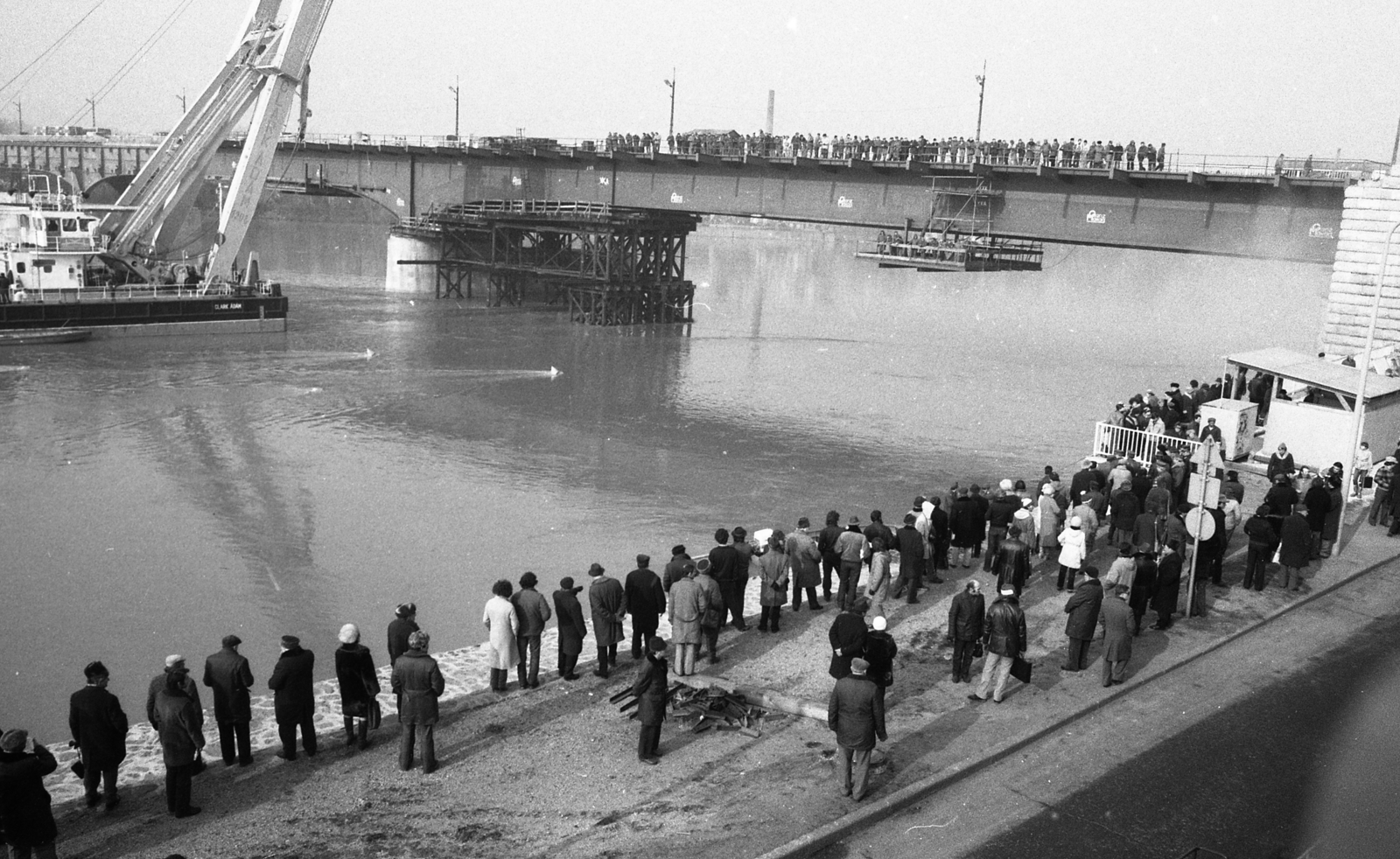
Widening the bridge in 1982 (Photo: Fortepan, Magyar Rendőr)
Two new bridges with the same visual design as the original were built to the north and south of the original structure. The three bridges together form the Árpád Bridge we know today and were completed between 1980 and 1984, reaching a total width of 35.4 metres.
Árpád Bridge was the longest bridge in Hungary until 2005, covering 928 metres with a total of 11 spans. While it is not the longest any more, it remains one of the busiest crossings in Budapest.
Cover photo: The bridge a year after being opened, 1951 (Photo: Fortepan, Uvaterv)

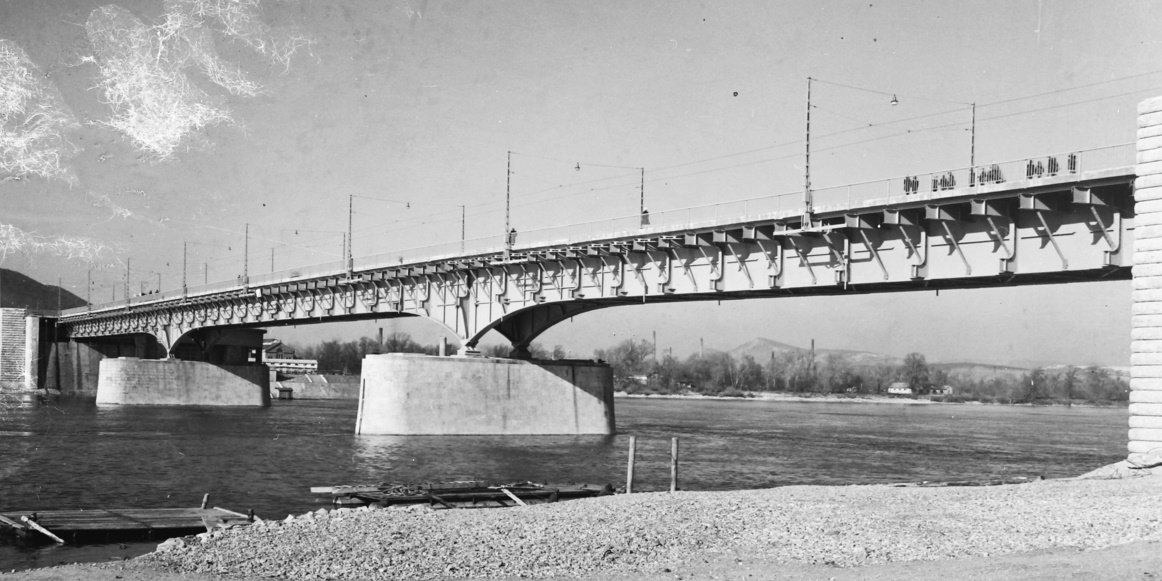



































Hozzászólások
Log in or register to comment!
Login Registration